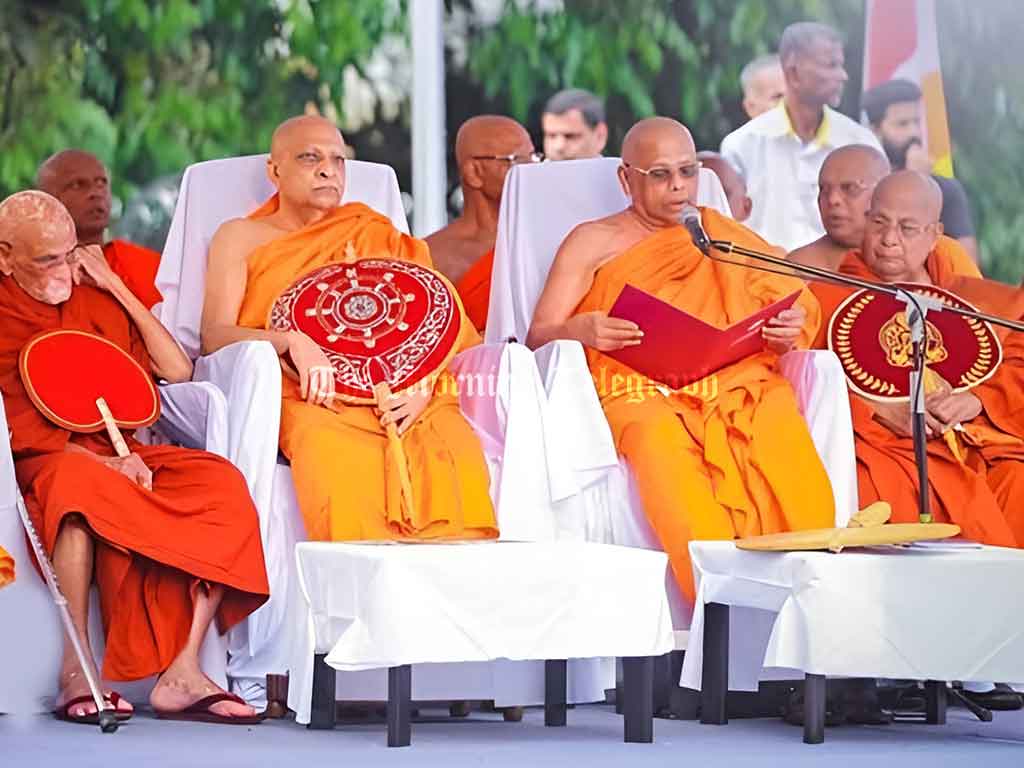
The Buddha did not speak in riddles. He denounced caste plainly, with clarity and courage. His teachings shattered the barriers of social hierarchy in ancient India with revolutionary conviction. And yet, centuries later, in a nation that proudly calls itself the protector of Theravāda Buddhism, those walls are quietly rebuilt within saffron robes.
Today, as the Sacred Tooth Relic is brought out for public veneration in Kandy for the first time in 16 years, the grandeur of the event conceals a painful contradiction. Beneath the garlands, rituals, and drums lies a deeply rooted truth: casteism is alive and well in the very institution that should be upholding equality and compassion. It is not merely tolerated. It is glorified.
At a recent government-organized ceremony meant to elevate the Tripitaka to UNESCO World Heritage status, the hierarchy of the Sangha was laid bare. Senior monks from the Kandyan-based Siam Nikaya were seated on majestic thrones, feet elevated, while their peers from the Amarapura and Ramanna Nikayas sat below, on plain chairs without footrests. This was no oversight. It was a declaration. A reenactment of centuries-old caste dominance under the guise of spiritual tradition.
This spectacle was not one of unity or reverence for the Buddha. It was a display of inherited privilege, dressed up in holy garb. It was a betrayal of the very principles the Buddha lived and died for. If the Tooth Relic symbolizes anything, it should be the Buddha’s rejection of social stratification. Instead, it has become a stage for feudal posturing.
Buddhist scriptures are unequivocal. In the Vasala Sutta, the Buddha proclaims that one is not noble or outcast by birth, but by deed. Yet the Siam Nikaya, founded in 1753 with royal blessing, still refuses to ordain men from outside the Govigama caste. Claims persist that even today, candidates must prove unblemished lineage through seven generations.
Contrast this with the Buddha, who welcomed everyone—including the sons of slaves—into his Order. By the standards of the Siam Nikaya, the Buddha himself would be unworthy.
This is not merely casteism. It is moral collapse. The Sangha, meant to be a refuge of merit and compassion, has become a closed guild, defending birthright over virtue. Sri Lanka’s monastic elite now behaves more like a Brahmanical class than disciples of a renunciate who challenged that very idea.
Ordination has been weaponized. The Amarapura and Ramanna sects only exist because they were excluded by the Siam Nikaya. And even these alternative orders have fragmented into sub-sects shaped by caste and region. Instead of being a sanctuary from lay society’s prejudice, the Sangha mirrors it.
To question this hierarchy is taboo. It is considered disrespectful. But silence is complicity. It is not the truth that divides, but the fear of speaking it. The only heresy here is the refusal to confront this corruption.
The Dalada Maligawa, so often invoked as the heart of the island’s spiritual life, must not become a palace of prejudice. The Sacred Tooth is not a relic to be guarded by bloodlines, but a legacy of a teacher who defied them.
Let us not pretend. This is not tradition. This is betrayal. It is time the Sangha returned to the Dhamma. It is time the people of Sri Lanka—Buddhist or otherwise—asked who speaks for the Buddha, and whether his words still echo in the halls where thrones rise above the floor.
The Buddha said, “Be a light unto yourselves.” Not “bow before rank” or “defend caste thrones.” In this, Sri Lanka must choose: protect a hierarchy, or honour a legacy.
The time for silence has passed. The time for reckoning is now.
SOURCE :- SRI LANKA GUARDIAN




